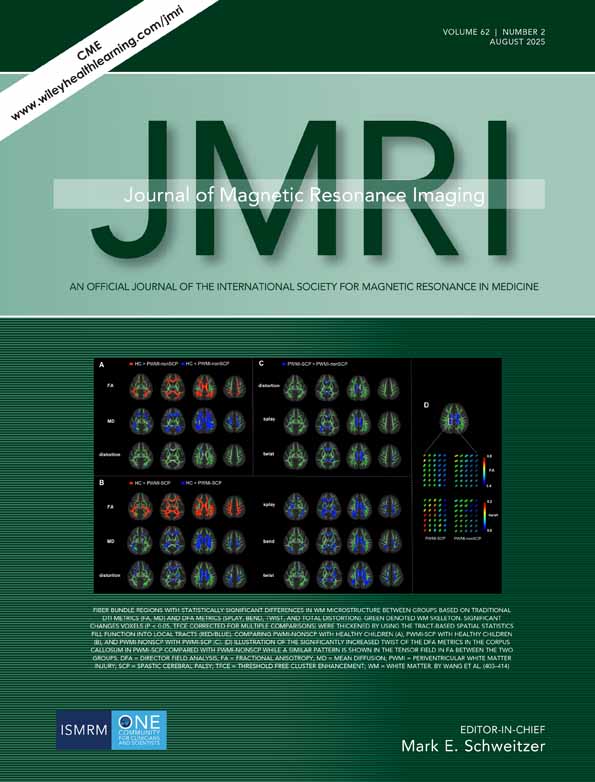Use of Blood Oxygenation Level-Dependent MRI to Predict Clinical Outcomes After Endovascular Revascularization in Peripheral Artery Disease
Funding: This study was funded in part by Natural Science Foundation of Shanghai (24ZR1445300) and Renji Hospital (IIT-2024-0068).
Shiteng Suo and Hui Tang contributed equally to this work.
ABSTRACT
Background
Blood oxygenation level-dependent (BOLD) MRI can noninvasively quantify lower extremity perfusion in peripheral artery disease (PAD) patients. However, its ability to reflect perfusion change in response to lower extremity revascularization (LER) and its prognostic value for clinical outcomes are not fully understood.
Purpose
To evaluate BOLD MRI response to LER and its predictive value for major adverse cardiovascular events (MACE) and major adverse limb events (MALE) in PAD patients.
Study Type
Prospective.
Population
Forty-one patients (median age, 73 years; 29 men) undergoing LER for symptomatic PAD.
Field Strength/Sequence
3.0 T/BOLD MRI with a multi-echo gradient-recalled echo sequence.
Assessment
Pre- and post-LER BOLD MRI was performed under an ischemia-hyperemia paradigm. Normalized T2* time course curves were generated in each of 5 calf muscle compartments (anterior, lateral, deep posterior, soleus, and gastrocnemius) and times to peak (TTP), minimum/maximum values, and gradients during hyperemia (Grad) analyzed. Follow-up was every 6–12 months via hospital records and telephone interviews for MACE and MALE outcomes. Model 1 (clinical factors) and Model 2 (+BOLD MRI) were compared.
Statistical Tests
Chi-square test or Fisher's exact test, Student's t-test or Wilcoxon rank-sum test, area under the receiver operating characteristic curve (AUC), Kaplan–Meier survival analysis, and Cox proportional hazards regression analysis. Significance was set at p < 0.05.
Results
During a median 38-month follow-up, 9 patients experienced MACE and 20 experienced MALE. Successful LER improved TTP and Grad in all muscle compartments. Grad change (ΔGradsol) and post-LER TTP (TTPsol) in the soleus muscle achieved the highest AUC values of 0.92 and 0.80 in predicting MACE and MALE, respectively. In multivariable Cox regression analysis, ΔGradsol and TTPsol were independent predictors of MACE (hazard ratio [HR] per standard deviation [SD] increase, 0.23) and MALE (HR per SD increase, 1.62), respectively. BOLD MRI added incremental prognostic value to clinical factors, increasing C-index by 0.06 for MACE and 0.05 for MALE.
Data Conclusion
BOLD MRI showed perfusion changes in skeletal muscles following revascularization and provided incremental prognostic value in PAD patients.
Evidence Level
2.
Technical Efficacy
Stage 4.




